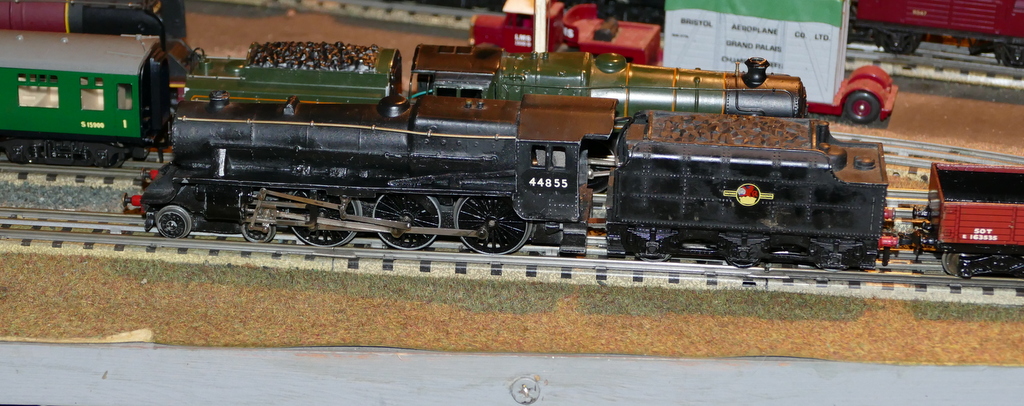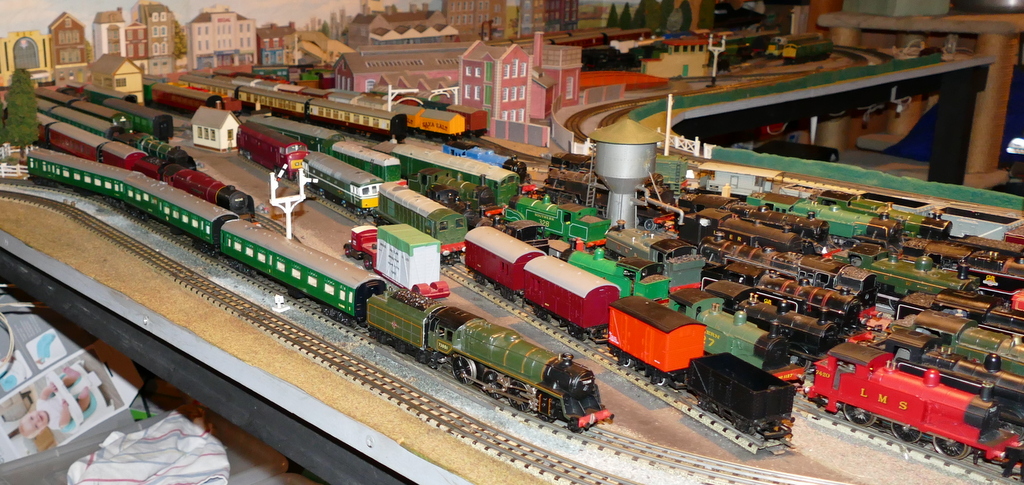This little dissertation is mainly for newcomers to HD 3 rail – old lags can skip this one.
Trix started with 14V AC locos before the war and continued with these immediately after the war. AC locos will run on HD track but will not reverse but Trix locos have very large flanges and will not run through HD points, Post War Trix introduced Trix Twin running on 12 volt DC and 3 rail but the 3 rail was different to HD and allowed two locos to run on the same track. Trix then realised that their large flanges were a problem and introduced scale wheels which will run on HD track and convertible wheels which had a plastic large flange which could be removed to produce scale wheels.
For a detailed explanation of Trix operations go here
Scale
The ‘Scale’ is the ratio of how the size relates to reality. HO = 1/87 scale (3.5mm/ft) OO = 1/76 (4mm/ft) scale. The UK is really the only market that uses OO scale, Europe and the USA use HO but UK OO scale trains run on HO track gauge
Gauge
Gauge is the distance between the rails. Standard gauge is 4ft 8 1/2 inches (1435 mm) which is the norm for the UK, Europe and much of the rest of the world. HO track is 16.5mm wide which equates exactly to the scale for 1435mm standard gauge.
So HD trains are to OO scale but run on HO track and this has stayed the same until the present day. For OO trains to run the correct scale track it would have to be 18.9mm wide. A mismatch that just has to be ignored.
And then along comes Trix which makes its Trix Twin trains to a scale of 1/80 (3.8mm/ft) but still run on HO track. This scale is unique, as far as I know, to Trix Twin trains
And here is the difference.

The Black 5 loco is an HD Neverwazza – Bristol Castle chassis, 8F motion 8F tender and Grafar body, behind is the Standard 4. The prototype Black 5 is a foot longer than the Standard but the model is a lot more than a scale foot longer and also wider. The Trix Standard 5 looks good runs well and fits in well when it is on Southern metals with Trix Mk 1 carriages behind it.



A very fine collection of motive power! David M.